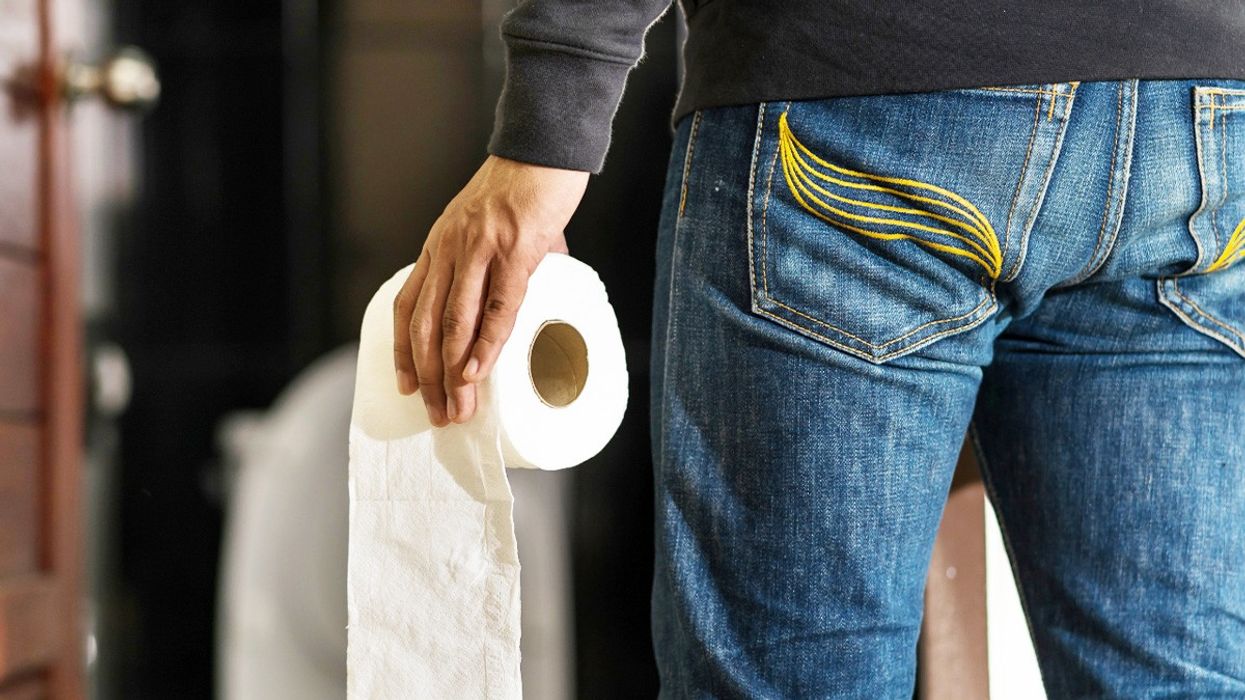In inner-city Philadelphia, a pilot program is arming its high schoolers with laptops. But in countries like Norway-and increasingly in the developing world-that's the norm. Why is the United States so behind? And is it worth it to play catch-up?"You can learn so much from the bathrooms," muses Bing Howell, a London-based education consultant who joined my tour around Philadelphia's School of the Future. While I am here to understand the school's one-laptop-per-child program, and our tour guide is keen to show off the SmartCard-operated lockers and electronic blackboards, Howell just wants to go the bathroom. "They speak volumes about whether the kids feel valued," he explains.By that standard, the students at the School of the Future are being prepared for lives in the executive suites. The men's room, with floor-to-ceiling tiles, pristine white sinks and urinals, and not a hint of the smoke-and-piss smell typical of most high school latrines, was even more impressive than the combination-lock-less lockers.My August tour of the School of the Future (and its bathrooms) is a relatively low-key affair. A partnership between Microsoft and the School District of Philadelphia that cost $62 million to build and opened in 2006, the high school has received far more official visits, like a delegation of Hong Kong high school principals and the education minister of Greece. Tony Franklin, the warmly competent face of Microsoft at the school, walks us through the building on a friendly auto-pilot.Built on a small hill at the edge of an enormous city park, next to a giant Gilded Age-era Civil War memorial, the school building sits above its neighborhood. Several buildings directly across the street are boarded up and others-like Philly Discounts Clothing, Golden Dragon Chinese and American Food, and Dollar Plus-testify to the neighborhood's poverty. By contrast, the blindingly white School of the Future, designed in a modernized classic style reminiscent of Richard Meier's starchitecture, stands out like a beacon. Out front, a pair of black metal sculptures celebrate classical education, depicting little Roman children crowded around toga-clad educators. Inside, the open-plan cafeteria, eerily quiet before the beginning of the school year, looks more like a university student union than a public high school. The ultra-wired conference room with sunny floor-to-ceiling windows and earth tone walls looks more Silicon Valley than stodgy, ragged, East Coast metropolis.
Skeptics might suspect the school is just an elaborate PR stunt-arguing the company contributes expertise not outright funding, and that home office's accounting means some years it pays no federal income tax at all, a key source of funding for public schools-but the company didn't take the easy route in creating the School of the Future. Initially, it considered building the school on its corporate campus in a wealthy suburb of Seattle but ended up collaborating with then-Philadelphia schools superintendent Paul Vallas to build in the high-poverty area of Philadelphia. And the School of the Future isn't a magnet school, plucking the plumest students from a city of one and a half million."The thinking in Philadelphia, with the decision to do a neighborhood school not a magnet school, was to try to find a way this could be replicated," says Stacey Rainey, an academic program manager for Microsoft. "If you put it in an affluent neighborhood and choose the best 10 percent of the kids, that's pretty easy. We wanted to create a new model for education. If we can be successful with the kids who live in West Philadelphia, that's a pretty strong statement."Admissions to the School of the Future is purely by lottery. (Parents or legal guardians must enter their children if they want a shot.) Three-quarters of the students must live in West Philadelphia-a largely poor section of the city with a few pockets of affluence-the rest from the remainder of the city. The students at the school are almost exclusively poor and black. Though there is some diversity within the black student body-a significant minority are immigrants or the children of immigrants from Africa or the Caribbean-there is only one white student and one Latina at the school. Ninety-eight percent of the students qualify for free breakfast and lunch, so many that the cafeteria is entirely cashless. It would be more trouble than it's worth to charge the 2 percent of non-poor students for meals.Opened three years ago, the school has added a class of new freshman each year. It now has juniors, sophomores, and freshman; next year it will have a full four years of students. It is too soon to have any hard data on whether the school is successful but preliminary indications are good. In a district where fewer than 60 percent of students graduate, in three years the School of the Future has yet to have a dropout.But Diane Ketelhut, a professor of education at Philadelphia's Temple University, argues that even when the data come in, it will be almost impossible to evaluate the School of the Future. "You can invest $62 million into a school which will house a very small percentage of the Philadelphia district's students. But you don't know what's working in the school," she says, since everything from the laptops to the bathrooms are superior to the typical inner-city high school. And the deluxe nature of the school doesn't necessarily help all students succeed. "You've created a cultural dissonance," she says. "They're going to a school that looks like an upper-class suburban school. And that kid goes home every day to awful living conditions and the child has to reconcile those two things. The little psychology I know this is like the survivor mentality. Why did I survive and others didn't? If they have all this money why can't they fix my house? This can help a child go up or down."Days before the school year begins, Franklin offers a tech tutorial for parents. The school's website gives parents log-ins so they can communicate with teachers and check their child's attendance and homework. Since many parents aren't computer literate this can be a tricky exercise. Some whiz through the process of setting up their passwords; others flounder. An older woman in a peasant shirt and knit cap arrives late and introduces herself: "I'm grandma," she says. "I don't have the first concept of a computer."Sitting down, she struggles with her laptop, trying to keep single-clicks and double-clicks straight and accidentally highlighting text on her screen. When she gets bumped off the network-a routine techno-snafu-she has no idea what had happened let alone how to fix it. But she perseveres: "I'm doing this for myself and for [my granddaughter]. Both her parents are deceased and she really needs to graduate from this school."Despite their underprivileged backgrounds, the students-all quick-fingered members of Generation Text-are far more tech savvy than their parents. When I return to the school in early September, it is teeming with teens, all dressed in identical blue button-downs with the school's distinctly uncatchy slogan-"Continuous, Relevant, Adaptive"-emblazoned on the breast pocket. Seating the students at their new computers for the first time, Thomas Gaffney, a young, white, compactly built math teacher guides the uniformly black children through the log-in process. Though they tool around on the machines with far more ease than their parents and grandparents, their other educational skills seemed a bit lacking. One login requires a semicolon, which one student can identify only as "that symbol right here," pointing to the keyboard.The lights dim and a brief promotional film about the school appears on the overhead screen. To me it seems like standard-issue corporate PR (an executive intones "mediocrity is not acceptable") but the takeaway for the students seems different. Asked for their reactions to the film, a girl with Jamaican-style braids responds, "None of them wanted to go home. They felt safe." Another student, named Xavier, piggybacks on her answer: "At my other school, I wasn't happy to be going to school. They don't motivate you enough, it's like they're there only to get paid. The teachers here ask you how you feel."
In the world's largest economy and leading technological innovator, the laptops-in-schools concept is still rare.Of course, the one-laptop-per-child concept is not unique to the School of the Future. The eponymous American nonprofit has famously distributed thousands of low-cost laptops everywhere from Peru to Cambodia. What is notable is that in the world's largest economy and leading technological innovator, the concept is still so rare. America, after all, is the country that invented the computer. (ENIAC, arguably the first true computer, was built just a few miles from the School of the Future, at the University of Pennsylvania.) But while the United States integrates computers on the patchwork, pilot-program model of developing countries like Peru, many of our economic peers-especially in technophilic Scandinavia-are embracing them as universal, an essential part of 21st century education. As an American high school student might ask: What's up with that?
Skeptics might suspect the school is just an elaborate PR stunt-arguing the company contributes expertise not outright funding, and that home office's accounting means some years it pays no federal income tax at all, a key source of funding for public schools-but the company didn't take the easy route in creating the School of the Future. Initially, it considered building the school on its corporate campus in a wealthy suburb of Seattle but ended up collaborating with then-Philadelphia schools superintendent Paul Vallas to build in the high-poverty area of Philadelphia. And the School of the Future isn't a magnet school, plucking the plumest students from a city of one and a half million."The thinking in Philadelphia, with the decision to do a neighborhood school not a magnet school, was to try to find a way this could be replicated," says Stacey Rainey, an academic program manager for Microsoft. "If you put it in an affluent neighborhood and choose the best 10 percent of the kids, that's pretty easy. We wanted to create a new model for education. If we can be successful with the kids who live in West Philadelphia, that's a pretty strong statement."Admissions to the School of the Future is purely by lottery. (Parents or legal guardians must enter their children if they want a shot.) Three-quarters of the students must live in West Philadelphia-a largely poor section of the city with a few pockets of affluence-the rest from the remainder of the city. The students at the school are almost exclusively poor and black. Though there is some diversity within the black student body-a significant minority are immigrants or the children of immigrants from Africa or the Caribbean-there is only one white student and one Latina at the school. Ninety-eight percent of the students qualify for free breakfast and lunch, so many that the cafeteria is entirely cashless. It would be more trouble than it's worth to charge the 2 percent of non-poor students for meals.Opened three years ago, the school has added a class of new freshman each year. It now has juniors, sophomores, and freshman; next year it will have a full four years of students. It is too soon to have any hard data on whether the school is successful but preliminary indications are good. In a district where fewer than 60 percent of students graduate, in three years the School of the Future has yet to have a dropout.But Diane Ketelhut, a professor of education at Philadelphia's Temple University, argues that even when the data come in, it will be almost impossible to evaluate the School of the Future. "You can invest $62 million into a school which will house a very small percentage of the Philadelphia district's students. But you don't know what's working in the school," she says, since everything from the laptops to the bathrooms are superior to the typical inner-city high school. And the deluxe nature of the school doesn't necessarily help all students succeed. "You've created a cultural dissonance," she says. "They're going to a school that looks like an upper-class suburban school. And that kid goes home every day to awful living conditions and the child has to reconcile those two things. The little psychology I know this is like the survivor mentality. Why did I survive and others didn't? If they have all this money why can't they fix my house? This can help a child go up or down."Days before the school year begins, Franklin offers a tech tutorial for parents. The school's website gives parents log-ins so they can communicate with teachers and check their child's attendance and homework. Since many parents aren't computer literate this can be a tricky exercise. Some whiz through the process of setting up their passwords; others flounder. An older woman in a peasant shirt and knit cap arrives late and introduces herself: "I'm grandma," she says. "I don't have the first concept of a computer."Sitting down, she struggles with her laptop, trying to keep single-clicks and double-clicks straight and accidentally highlighting text on her screen. When she gets bumped off the network-a routine techno-snafu-she has no idea what had happened let alone how to fix it. But she perseveres: "I'm doing this for myself and for [my granddaughter]. Both her parents are deceased and she really needs to graduate from this school."Despite their underprivileged backgrounds, the students-all quick-fingered members of Generation Text-are far more tech savvy than their parents. When I return to the school in early September, it is teeming with teens, all dressed in identical blue button-downs with the school's distinctly uncatchy slogan-"Continuous, Relevant, Adaptive"-emblazoned on the breast pocket. Seating the students at their new computers for the first time, Thomas Gaffney, a young, white, compactly built math teacher guides the uniformly black children through the log-in process. Though they tool around on the machines with far more ease than their parents and grandparents, their other educational skills seemed a bit lacking. One login requires a semicolon, which one student can identify only as "that symbol right here," pointing to the keyboard.The lights dim and a brief promotional film about the school appears on the overhead screen. To me it seems like standard-issue corporate PR (an executive intones "mediocrity is not acceptable") but the takeaway for the students seems different. Asked for their reactions to the film, a girl with Jamaican-style braids responds, "None of them wanted to go home. They felt safe." Another student, named Xavier, piggybacks on her answer: "At my other school, I wasn't happy to be going to school. They don't motivate you enough, it's like they're there only to get paid. The teachers here ask you how you feel."
Even if it is successful, is the School of the Future truly the pilot program it claims to be?With its international reputation, the school has attracted a corps of young teachers excited about technology and education. When the school hires teachers-or even a new principal-students take part in the interview process. Interdisciplinary learning and team teaching are standard operating procedure.But even if it is successful, is the School of the Future truly the pilot program it claims to be? The school is clearly acting as a magnet school for teachers if not students and the building came in $15 million over-budget. "I'm not a fan of spending $62 million on one school," Temple's Ketelhut says. "There's an equity issue. It's one thing if it's a pilot and if it works we'll do it elsewhere. But is there money to do it elsewhere?"Even Tony Franklin admits that given the budget constraints of inner-city education, "a one-to-one laptop program in every school in the district is not realistic."Two weeks later, I am sitting in another high school classroom with one laptop for each student. A typical English class, they are reading a typical English class text: an excerpt from the 1959 play, A Raisin in the Sun, which chronicles the African American experience. The integration of computers merely meant that materials that would have been separate in an earlier era-the text, a video excerpt from a performance of the play, and an interview with Sean "P. Diddy" Combs about his recent made-for-TV revival-were all available on the same screen rather than in a book, a film screen, and a handout.The teacher, a middle-aged woman with blond hair and a vaguely British accent calls out to me as she pulls up the Q&A on the overhead screen showing the desktop of her laptop (covering up the Barack Obama wallpaper). "Daniel, do you know of Sean Diddy?"I did, of course, though for a man with so many aliases, I'd never heard that one before. The subtleties were lost in translation, I figured. After all, this was an ESL class. I was in Norway, a nation that is well on it's way to equipping every high school student in the country with a laptop.In 1996, the Norwegian education ministry decided to promote digital literacy to the status of a "core competency" no different than reading, writing, and math-simply something every student is expected to master. The central government never mandated one laptop per student per se, but in effect this is what is happening as county school districts have concluded that giving all their high schoolers laptops is the best way to meet the national goals. Roughly half of Norway's upper secondary school students now tote laptops; within a few years, they all will.Kjell Atle Halvorsen, who teaches educators how to use technology in the classroom and researches technology in education issues at the Norwegian University of Science and Technology, explains why his nation has embarked on such an ambitious, universal one laptop per child program. "There is the general feeling that we just have to do this, that we have to make this technology available to everybody," he says, sporting the unofficial uniform of the global technorati-black shirt, jeans, and octogon-shaped glasses. "We have to do it for economic development reasons, because for the kinds of jobs these kids are going into its required. [We also have to do it to avoid having] active and non-active citizens, which is a democratic issue," since government hearings are now podcast and public services are more and more accessed online. "[It's] also as a symbolic gesture to tell the world that we're really with it, we're there, we're out front."When I met him in his tiny office with a view of the Norwegian countryside, he was in the midst of writing up a study of North Trondelag County, one of the first counties in the country to fully implement one laptop per child in its high schools. Unlike the School of the Future in Philadelphia which acts as a magnet school for teachers, the universal implementation in North Trondelag means every teacher has to deal with the technology whether she likes it or not. As one high school administrator told me, "Many of our teachers are 50 years old. They hate computers." At another school a sign was posted at the front of the room decreeing: "DO NOT WRITE ON THE SMARTBOARDS."Surprisingly, the divide is not a simple one between young and old; there seem to be three generations. There are the over-50s, who are downright hostile to technology. Then there are the 35-50s who grew up without computers and are so wowed that they completely embrace them for everything. And then there are the younger teachers, aged 22 to 35, who grew up with computers and integrate them for tasks where they're helpful, but have students put them away for lessons where they would be a distraction. Having the computer open at all times is just too tempting, one young Norwegian student teacher told me. "Just clicking on Windows is more interesting nine times out of 10 than the teacher. [To learn, they] need eye contact and body language."In Norway, teachers are learning by trial and error about when laptops come in handy. Some Norwegian schools have banned the addictive multiplayer web game, World of Warcraft. (The School of the Future has blocked MySpace for similar reasons.) But the applications for learning foreign languages, like speech-recognition software, can be very helpful. Computers are also helpful for creating a public sphere in the classroom and community. In elementary schools, children now create book report blogs rather than just write up assignments and hand them to the teacher. The perennial book report question-"Would you recommend this book to a friend?"-is no longer rhetorical since classmates can look up each other's reports online. Similarly, the typical Norwegian high school field trip to Germany is now blogged about online rather than scribbled about in journals. Concerned parents can simply log in and see what their kid is up to.But the technology brings with it some problems, as well. At the School of the Future, one month into the school year, parents still hadn't been able to log on to the web portal because of bugs in the software.Though Halvorsen is a tech booster-"We have to make sure that this digital literacy is absolutely for everybody because so much depends on it"-he is cognizant of the county's growing pains. He concedes, "I think we may be putting too many computers into Norwegian schools too fast [and] skipping the debate on the fundamentals. What is really going on in the schools and how can we use the computers to improve the practices in the schools? But it will come." The testing period is just a necessary evil. "How can you have that debate related to a new technological situation if you don't have the technology available. It's the hen and the egg, as we say in this country." I nod at his obscure Norwegian expression.In a nation where even working-class jobs are high-tech and high-wage there is a base level of comfort with technology that poverty-plagued American cities like Philadelphia, where a 2006 study showed less than half the city's residents had home internet access, can never match. While the city is perfecting a citywide wireless network, at the School of the Future, students who lack internet access at home are counseled to go to McDonald's to do their homework on the fast food joint's free wireless system.It's not that Norway has no problems; it's just that it actually deals with them. Poor kids in Norway underperform in school just like poor kids in the United States. But seeing this problem, Norway addresses it with ambitious child-poverty-reduction programs. As a result, in Norway, only 3 percent of children grow up poor compared to 22 percent in the United States. Similarly, even in Norway, working-class parents tend to push their children in school less hard than professional parents. Halvorsen says one of the reasons one-laptop-per-child has been so universally implemented in Norway despite the lack of an official federal mandate has been pressure from "the well-educated digitally-advanced parents." In the U.S., well-educated parents send their children to certain schools, even certain school districts, while less educated parents are concentrated in others. As a result, parental pressure only affects certain schools and digital literacy remains spotty.Shortly after observing a class of Norwegian 17-year-olds competing to design the cheapest functional bridge (freeware courtesy of the U.S. Military Academy at West Point), I am back at the School of the Future. Sitting in the Philadelphia math class, it is hard to imagine that these students are the same age as they plot simple inequalities like "-2 < x < 3" on a number line.Kelly Cooper, just two years out of college, a red-headed transplant from the northwest corner of Pennsylvania where she grew up half an hour from the nearest gas station, tries to inspire her students with her enthusiasm. "I try to be really optimistic," she says. "They think I'm so passionate about math. I play that up a lot." But while an enthusiastic teacher can convince elementary school children to be excited about most anything, it is hard to get 17-year-olds excited about something as self-evidently dull as graphing inequalities. Without the requisite background math skills, it's virtually impossible to do more interesting work like bridge-building. In the Norwegian class, the latest technology allows students to do ever more sophisticated tasks. In Philadelphia, despite the technology, the students lagged far behind grade level. If you're reading at a 5th grade level, what good is an instantly searchable Complete Works of Shakespeare, anyway?Teachers are also discovering how to use technology to allow the handful of students who are truly excelling to do more advanced work. Some teachers includes hypertext links to more sophisticated readings for students who can handle them. Ms. Cooper e-mails extra assignments to her best students. But far more kids are behind than ahead.Trying to pull her students forward, Ms. Cooper goes far beyond the typical role of a math teacher not merely providing SAT tutoring but guiding students through the college application and financial aid rigmarole. She builds their resumes by organizing community volunteering projects on all the school holidays that are of little relevance to her kids, like Yom Kippur and Columbus Day. And she tries to open them up to the larger world beyond their neighborhoods, IM-ing with them during the presidential debates or Jeopardy."We're making gains, though I'm not going to get them caught up to where our kids in the suburban school are," she admits. "I do private tutoring with some kids from a private school and there's just no comparison between the two of them, which is really disheartening to see. Even my really bright students are just nowhere near where their potential is."As Professor Ketelhut puts it, "It's frustrating when people think we can find a single thing to ‘fix' the schools. Maybe their home is condemned and they're living in a car. The School of the Future is not going to change that student's life. Six hours a day isn't going to fix what happens the other 18 hours of the day. We can't give every kid a laptop like that's going to change everything."In the United States, laptops are too often regarded as a silver bullet that can transform an under-performing inner-city school, replacing traditional modes of learning. In Norway, laptops are seen as a necessary add-on to keep students up-to-date in a changing world. The School of the Future library (dubbed the "Interactive Learning Center") is lined with empty shelves-who needs books when you have web access?-while the library in the Trondheim city school I observed had hard copies of all the latest Norwegian novels, every major newspaper in the country, and even American magazines like Newsweek. Built in 2004, the Trondheim school was even more architecturally distinguished than the School of the Future though it hadn't hosted any principals from Hong Kong or education ministers from Greece.As Microsoft's Stacey Rainey said, "In education, there are always going to be the early adopters and the folks that kind of lag behind a bit." She was talking about various American schools but her statement could apply to countries as well. Despite our self-image, America is the laggard not the early adopter.While the rest of the world builds bridges, we just plot inequalities.Images Norway by Corey Arnold; Philly by Meiko Takechi Arquillos.
















 Otis knew before they did.
Otis knew before they did.